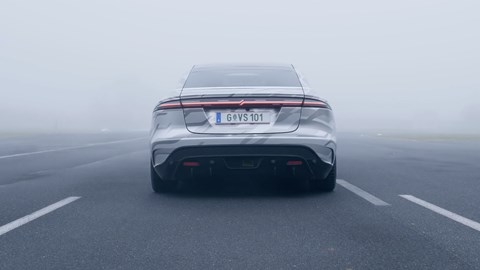► Honda and Sony announce partnership
► First vehicle to be manufactured by Honda…
► … while Sony takes care of ‘mobility service platform’
Sony’s back with another electric car prototype at the Consumer Electronics Show – this time in the shape of an SUV. The new model is currently called the Vision-S 02, and it’s another test bed for its future automotive-focused technology.
Sony Honda Mobility Inc: what you need to know
But, this time, Sony’s serious. In 2020, it pulled the covers off the original Vision-S – a clean-looking saloon-shaped EV that incorporated a lot of Sony’s infotainment and safety technology developments – but promised it was just for them to test the waters and get the ball rolling. Now, though, after two years of prototype testing with the original Vision-S, it’s confirmed it’s setting up Sony Mobility Inc. in order to ‘explore entry into the EV market.’
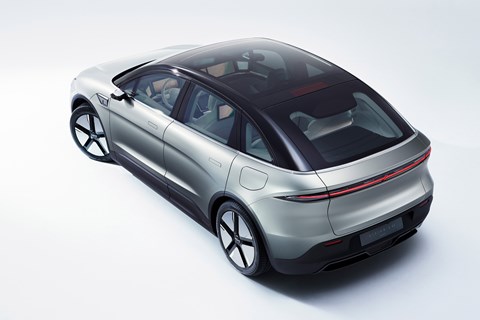
So what’s different about the Vision-S 02?
It gives off largely the same vibe as the original Vision-S did back in 2020, albeit now in an SUV shape. Sony says it’s a seven-seater, and points to all the seats having access to its infotainment systems.
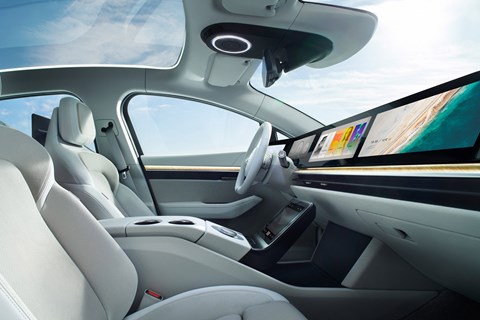
But other than that, it’s got the same architecture underneath – named the EV/cloud platform. Performance specs aren’t finalised – it’s a concept remember – but Sony says the Vision-S 02 has a 200kW e-motor on each axle and is capable of more than 112mph.
The Vision-S idea
To find out the scope of the Japanese giant’s new car-shaped ambitions, and to check if things were going PlayStation or Betamax, CAR spoke to Izumi Kawanishi, Sony’s senior vice president of AI Robotics Business in 2020, to find out more.
‘I think we certainly have a lot of opportunity in the automotive space,’ Kawanishi told CAR over video link. Known especially for his work on Sony’s robotic Aibo dog, Kawanishi’s background in AI Robotics is more related to automotive than you’d first think.
‘The industry is moving to electrification… our main purpose is to contribute to the evolution of mobility, utilising our advanced technology.’
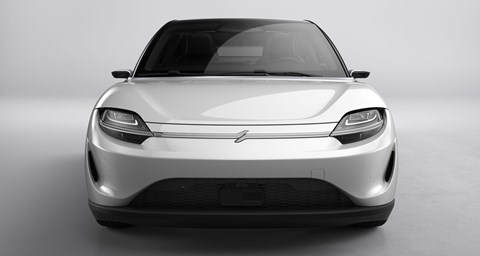
Just like the early ’90s, Sony has seen a rapidly changing industry move into its crosshairs and decided to pounce. ‘We started a project three years ago, in the spring of 2018,’ he explains. ‘I had a lot of discussion with the management team of how to proceed with this project.’
The result of those discussions is the Vision-S. Now testing on public roads, Sony’s first EV is a modest looking sedan. Finished in the same silver and chrome as – presumably intentionally – an old MiniDisc player or old Wega widescreen, it’s handsome, but not overtly so.
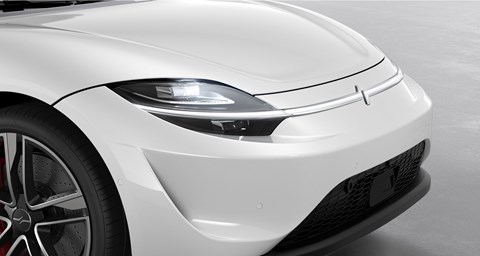
Kawanishi tells CAR that a coupe was chosen over the more typical SUV shape because of the inherently sportier and more stylish opportunities it brought. It’s not slow; the Vision-S it’s powered by two 200kW motors (one on each axle) good for 0-62mph in 4.8 seconds. Top speed is rated at 149mph.
Underneath, it’s all framed by a Sony-developed, Magna Steyr-built chassis, designed for a saloon first – but with the possibility of being stretched and pulled for other EV types in the future. But looking at the oily bits is missing the point.
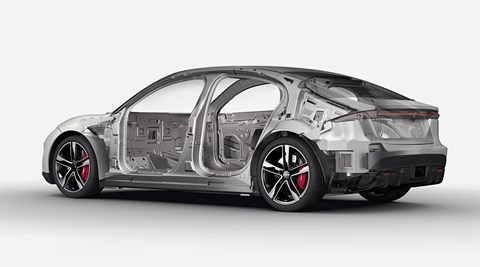
Although the Vision-S looks production ready in the most recent videos, Sony isn’t about to churn them out, and Kawanishi is quick to recalibrate our expectations. ‘It’s just a showcase at this time,’ he tells us. ‘Frankly its current status is an R&D base,’ he says later on.
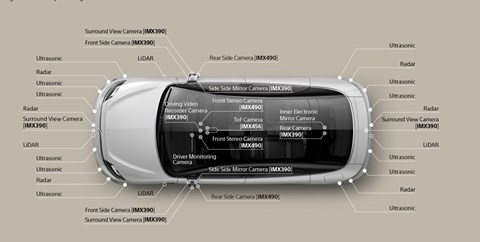
The tech
Rather than building a whole car, Sony is flexing its R&D muscles and focusing on autonomous safety technology and interior entertainment; the Vision-S is merely a stylish test bed. Take a closer look at the EV, and it’s dripping with tech. There are some 40 sensors around the Vision-S: 18 optical devices, 18 ultrasonic radars and four lidar.
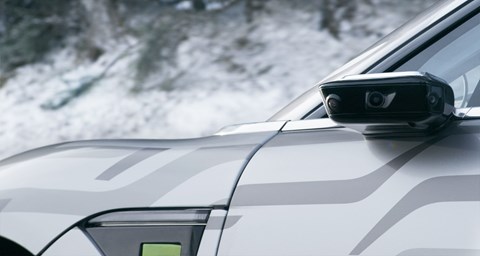
‘We are focusing on safety at first,’ confirms Kawanishi. ‘Second, of course, we will provide our entertainment systems or content.’
For Sony, safety means autonomous technology – from lane-changing to parking – and it’s not taking the task lightly. ‘Automotive technology or automotive quality is completely different from consumer products because we have to secure human life,’ he reminds us. ‘It’s a very big challenge.’
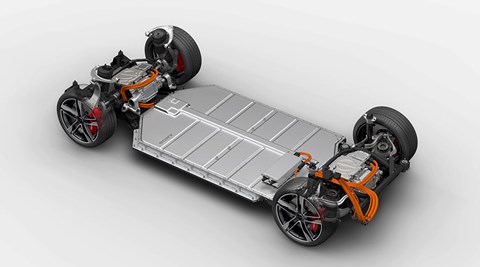
In the same way Sony approached Magna to build the chassis, it’s partnering with AI Motive, a Hungarian-based company specialising in autonomous tech. And despite its technological might, Sony is setting conservative targets.
‘Currently, we are focusing on Level 2+ [the car is able to control certain functions], but for the future we can try Level 4 [fully autonomous in certain areas] or more than Level 4, but currently we are trying 2+,’ he explains. ‘In the end of this year, or next year, we can show such kind of technology.’
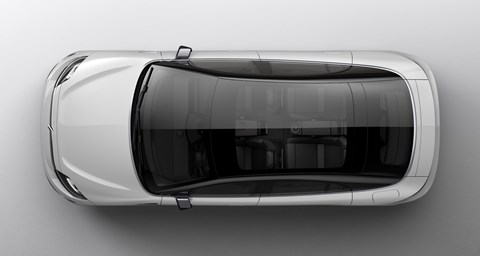
The interior
However, Sony’s strongest suit, and arguably its main reason for entering the automotive space, lies in the Vision-S’s interior. Like most contemporary cars, the EV’s cabin is dominated by flatscreens, audio tech and UI – areas the sprawling Sony empire already has vast know-how.
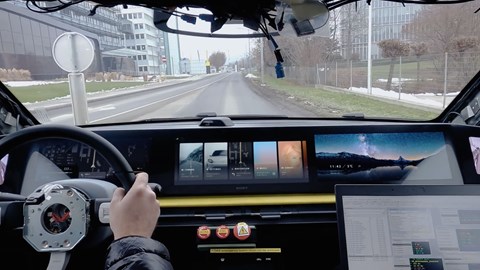
Here the electronics giant doesn’t need to partner up, as it can simply repurpose and reoptimise its existing technology; 360º sound from the brand’s audio division is present, as is the ability to use PlayStation hardware remotely using 5G. Lip-reading and passenger-sensing tech is also being developed.
Kawanishi tells us the Vision-S’s voice recognition tech comes primarily from Sony’s range of Xperia phones, as does the crisp UI, and there are Sony-branded displays throughout the cabin. The Japanese giant’s experience with mobile devices also contributes to Vision-S Link, a counterpart app for the EV.
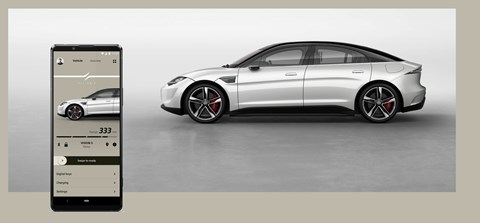
Sony’s masterplan
Sony’s mission, then, is to jump from the living room to the car, and with the industry’s trend toward larger touchscreens and autonomous tech it’s not the leap it first seems. Have a glance at the supplied videos, and the idea of a Sony cabin – with UI as good as your smartphone, audio as good as your hi-fi and screens as crisp as your TV – becomes very compelling.
There aren’t many companies that have such strong brand-recognition in such as spread of areas, and Sony must hope its wholesome image means it’ll be trusted for car safety tech, too.
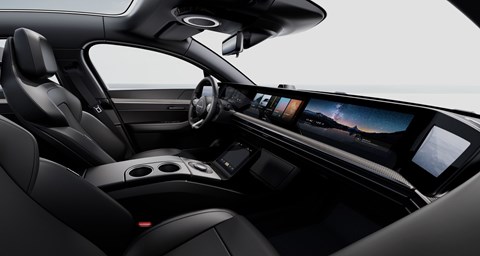
Although there are no firm plans as yet, Sony wants to be next to the most expensive boxes on your next car’s options list – if it’s something like a Mercedes E-class or a BMW-5-series: ‘We can consider several options, and this is a personal idea,’ Kawanishi says. ‘But a premium car is better.’
Like it did in the early ’90s, Sony has identified a new opportunity and taken a calculated approach, relying on its existing expertise for most areas and partnering up for everything else. Sony’s slow and steady approach – framing itself first as a supplier of safety and interior tech – doesn’t quite grab the headlines or have the same seismic impact of an Apple car. But it’s more likely to happen.
